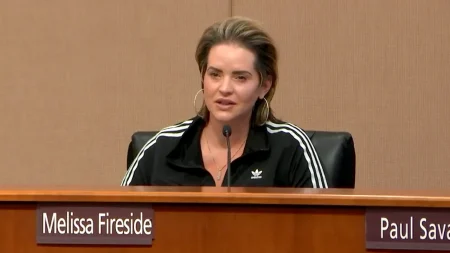Gaza Humanitarian Crisis Intensifies as Israeli Ground Offensive Drives Mass Displacement
Healthcare System Collapses Under Pressure of Escalating Conflict
In the southern regions of Gaza, a humanitarian catastrophe is unfolding at an alarming pace. Hospitals are operating well beyond capacity, potable water supplies have dwindled to critical levels, and public health officials report a troubling surge in communicable diseases as hundreds of thousands of Palestinian civilians flee southward to escape Israel’s expanded ground offensive. The mass exodus has transformed relatively stable areas into overwhelmed safe havens, with essential services buckling under the strain of the sudden population influx.
At Al-Aqsa Martyrs Hospital in Deir al-Balah, medical staff work around the clock in corridors lined with makeshift beds where patients receive treatment on blood-stained floors. “We’re performing surgeries in hallways, without adequate anesthesia or sterile conditions,” explains Dr. Karim Nasser, the hospital’s chief surgeon. “Our medical supplies were depleted weeks ago, and we’re now forced to reuse disposable equipment.” The facility, designed to accommodate 150 patients, now houses over 600, with new arrivals continuing to stream in as the fighting intensifies. The World Health Organization reports that 23 of Gaza’s 36 hospitals have ceased functioning entirely, with the remaining facilities operating at three to four times their intended capacity.
Water Crisis Threatens Public Health as Displacement Continues
The scarcity of clean water has emerged as perhaps the most immediate threat to public health. United Nations humanitarian coordinator Martin Griffiths described the situation as “catastrophic,” noting that functioning water infrastructure now delivers less than 3% of pre-conflict capacity. “We’re witnessing the complete collapse of water purification and distribution systems,” Griffiths stated during an emergency briefing. “The average Gaza resident now subsists on less than two liters of water daily for all needs—drinking, cooking, and hygiene—far below the humanitarian minimum standard of 15 liters.” In displacement camps hastily established near Rafah and Khan Younis, residents wait in lines stretching for kilometers to fill containers from the few operational water trucks, which themselves are running dangerously low on fuel.
The consequences of water scarcity have manifested in a wave of waterborne illnesses sweeping through displacement camps. International aid organizations have documented over 35,000 cases of diarrheal diseases in the past week alone, with children under five representing more than half of those affected. “We’re treating conditions we haven’t seen in Gaza for decades,” reports Dr. Amina Khalidi with Médecins Sans Frontières. “Hepatitis A, shigellosis, and even suspected cholera cases are appearing. Without immediate intervention, we’re looking at a secondary public health disaster that could claim more lives than the conflict itself.” The breakdown of sanitation systems has compounded the crisis, with raw sewage flowing through streets and contaminating the few remaining water sources.
Displacement Crisis Reaches Unprecedented Levels
The scale of displacement has reached staggering proportions, with the United Nations Relief and Works Agency (UNRWA) estimating that over 1.5 million Gazans—approximately 75% of the territory’s population—have been forced from their homes since the conflict began. The recent intensification of the ground offensive has triggered a new wave of displacement, with an estimated 200,000 people fleeing northern Gaza in the past week alone. The southern city of Rafah, which normally houses approximately 150,000 residents, now shelters over 700,000 displaced persons, creating population densities that humanitarian experts describe as “unsustainable and dangerous.”
“We’ve been displaced three times in two weeks,” recounts Fatima Al-Jabari, a 42-year-old mother of five from Gaza City. “First from our home in the north, then from my brother’s apartment in central Gaza, and now we’re sleeping on the floor of a school in Rafah with 40 other families. There’s nowhere left to go.” The psychological toll of repeated displacement compounds the physical hardships. Mental health workers report alarming rates of trauma symptoms, particularly among children, with nightmares, bed-wetting, and severe anxiety becoming widespread. UNICEF spokesman James Elder described the situation as “a generation experiencing trauma that will endure for decades.”
Aid Agencies Face Unprecedented Challenges in Relief Efforts
International aid organizations face monumental challenges in delivering assistance to the displaced population. The World Food Programme reports that less than 20% of needed supplies are currently entering Gaza due to border restrictions, damaged infrastructure, and security concerns. “We’ve never encountered obstacles of this magnitude in delivering humanitarian assistance,” explains WFP regional director Corinne Fleischer. “Even when supplies reach border crossings, the logistical and security challenges of distribution within Gaza are nearly insurmountable.” Food insecurity has reached critical levels, with emergency nutritional assessments indicating that over 90% of Gaza’s population is experiencing hunger, and acute malnutrition cases among children have increased fivefold since October.
The breakdown of the aid distribution system has led to increasingly desperate scenes at distribution points. “Yesterday, our food convoy was overwhelmed by thousands of hungry people,” recounts Ibrahim Khalil, a Palestinian Red Crescent worker. “We had to abandon the distribution when the situation became dangerous for both our staff and the civilians.” Aid organizations have repeatedly called for humanitarian pauses in the fighting to allow for the safe delivery of supplies, but these have been limited in scope and duration. The United Nations Security Council’s resolution calling for “extended humanitarian pauses” has yet to translate into sustained access for relief operations.
International Response and the Path Forward
The international community’s response to the unfolding crisis has been marked by diplomatic deadlock and insufficient action. While humanitarian aid pledges have reached billions of dollars, the practical challenges of delivery have prevented these resources from reaching those in need. Diplomatic efforts to secure a ceasefire have intensified, with mediators from Egypt, Qatar, and the United States working to broker an agreement that would allow for sustained humanitarian access and the eventual cessation of hostilities. However, these negotiations have yet to produce concrete results that meaningfully improve conditions on the ground.
Public health experts warn that without immediate intervention, the combination of overcrowding, malnutrition, water scarcity, and collapsed healthcare systems could result in mortality rates that far exceed those directly caused by the conflict. “What we’re witnessing is the complete breakdown of systems necessary to sustain human life,” observes Dr. Michael Ryan of the World Health Organization. “Even if fighting stopped tomorrow, the public health emergency would continue for months.” As winter approaches, bringing colder temperatures and increased risk of respiratory infections, humanitarian organizations are racing against time to establish sustainable water, sanitation, and shelter solutions. The coming weeks will prove critical in determining whether the international community can mobilize an effective response to prevent what UN Secretary-General António Guterres has described as “a humanitarian catastrophe of historic proportions.”










